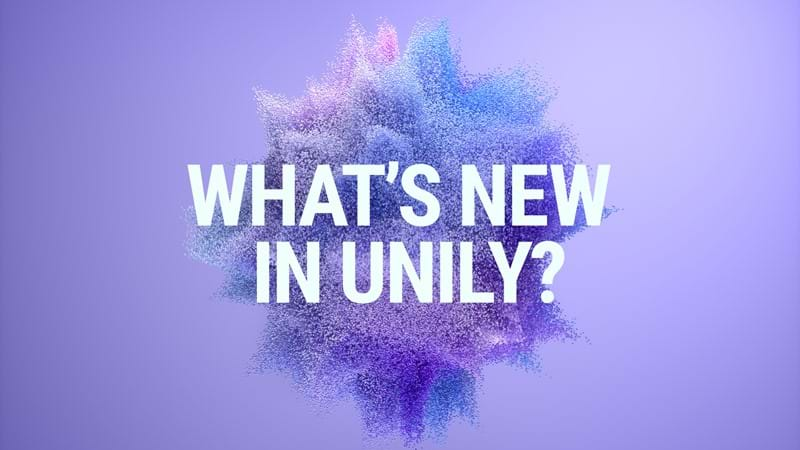Can Microsoft Teams replace your intranet?
Microsoft Teams has become a dominant force for virtual collaboration. With their number of daily users more than tripling since the start of the pandemic, Teams is now a seemingly ubiquitous part of remote working. But can it replace your intranet?

The rise of Microsoft Teams in the remote era
Few products have seen the same kind of dramatic uptick as Microsoft Teams. Prior to the start of the pandemic, the application counted 32m as active users. Fast forward a year, and the number of people using Teams has now surpassed 145m.
There’s little mystery behind this usage surge. When employees transitioned to working remotely, Teams became the go-to channel for hosting meetings, checking in on colleagues, and sending project updates. As popularity climbed, Teams continued to evolve, adding the ability to integrate with popular workplace apps and a Tasks app.
On the heels of these upgrades, some leaders may wonder if they still need their intranet. After all, Teams shares some of the same core functions: it’s a streamlined hub that allows users to message colleagues, collaborate, and share files. So does that mean it’s time to say goodbye to your intranet, once and for all?
Intranets, Teams, and the new employee experience
For years, employee experience was thought to be comprised of 3 environments: cultural, physical and technological. Now that the flagship office has gone digital, the technological component of your employee experience matters more than ever before. Rather than being a part of your employees’ workplace experience, technology now defines how your employees experience work.
As a result, employee experience and the digital workplace have become focal points for the next chapter of work. 64% of leaders are prioritizing employee experience more than they did before COVID-19 and nearly 70% have begun expressing more involvement in the digital workplace.
As decisionmakers look to technology to enhance employee experience, the role of each digital tool will come into focus. Much like its name suggests, Teams excels at powering collaboration and making it easy for small groups to work together. While teamwork can certainly help drive engagement, there’s a lot more that goes into employee experience. Your people still need centralized resources, targeted content, and reliable information. And that’s where your intranet comes into play.
5 reasons why Microsoft Teams can’t replace your intranet
As we approach a chapter of work that is increasingly technologically driven, creating a compelling employee experience is going to come down to having the right tools at your disposal and understanding the role they each play.
No matter how active your chats are or the number of files you share, Teams isn’t going to become an intranet alternative because it doesn’t solve some of the core employee experience challenges that your intranet software can address. Some of the missing functionalities that you’ll need for enhancing digital employee experience in the new world of work include:
#1. Content management
Teams lacks common CMS and publishing functionalities that are critical for internal communications. You won’t be able to publish a news article, encourage colleagues to share their stories via user generated content, or create and send out an email newsletter.
To make things more complicated, Teams also lacks analytics capabilities that many internal communicators rely on to measure engagement and finetune their strategy. Without data on interactions and click-throughs at their fingertips, your internal comms team won’t have the insights they need to launch initiatives that will positively impact employee experience.
#2. Governance
There’s a lot that goes into successful content publishing, including governance to ensure pages are updated and relevant. Without built-in quality control, your employees will stop engaging with your internal messaging because content will feel flat and out of date.
Teams doesn’t give your internal communications department the ability to establish clear ownership of every page, create automated reminders to review content, and decide who can publish what where.
#3. Branding
You want your digital workplace to feel like an extension of your corporate brand. When employees join your platform, they should feel like they are stepping into your company office. With intranets positioned to serve as the new digital headquarters, there’s no doubt that these solutions can be customized to match your own unique look, including logos, theme colors, and signature fonts.
In contrast, Microsoft Teams has a blue and grey canvas that can’t be changed. While you can use your own logos for apps and teams, you won’t be able to give the platform the same kind of custom look and feel that you can create for your intranet.
#4. Search functionality
What happens when your people need an answer about something, fast? Let’s say a user is looking for information about HR benefits. With a next-generation intranet, your employee can type their keywords into a unified search center and get the most relevant results across every source type. They can even use filters and refiners to get more specific about the kind of results they want.
However, if you’re relying on Teams alone, you can expect a lengthier process for your end-users. Your employees might need to find a channel for the HR team, skim through the conversations, or message a peer directly. There’s no self-service or personalized search, which might cause a dip in both productivity levels and user satisfaction rates.
#5. Targeting and personalization
Your intranet gives you the power to create targeted experiences that align with specific users’ roles and regions. If your IT team needs to see what tickets are outstanding, you can create a homepage specifically for them that puts this information front and center. With Teams alone, there isn’t much room for targeting, so you’ll have to take a one-size-fits-all approach for your employees’ digital experience.
Teams and your intranet: better together
Since Teams can’t replace your intranet, what role should it play? Although it may be missing some key functionalities that your intranet can provide, Teams is one of the best enterprise collaboration tools available.
When using both Teams and your intranet, your employees get the best of both worlds. They can chat with colleagues and screen share on Teams for effective virtual collaboration and then turn to your intranet to find any related resources they’re looking for or learn about a project their peers are doing.
To fully leverage the power of both tools, your intranet should include integrations with Teams. Here at Unily, a Share to Teams integration allows content from your intranet to be shared directly to your colleagues through Teams, amplifying multi-channel comms. There’s also an at-a-glance overview of Teams activity, so your users can stay more connected to collaborative workstreams.
Learn more about Powerful Microsoft Office 365 Intranet solutions.
Creating the perfect pair for your digital ecosystem
When it comes to choosing the best intranet to use with Microsoft Teams, not every option is created equally. As a legacy communications tool that integrates with the wider Microsoft 365 suite, some leaders may turn to SharePoint as their intranet of choice. Perhaps others will be drawn in by Viva, the latest Microsoft arrival, which is designed to work in tandem with Teams and SharePoint.
While both Viva and SharePoint intranets offer a compelling solution to small and medium-sized businesses, enterprises with complex workforces or large frontline segments without Microsoft licenses will likely favor an independent platform capable of delivering more bespoke experiences. Viva Connections and SharePoint are a good option for organizations looking to implement workgroup portals. However, organizations requiring a deeper range of intranet capability should consider using intranet-focused platforms like Unily, that provides a full palette of turnkey, intranet-specific functionality and services.
With the move to hybrid working well underway, leaders are turning to intranet technology to maintain productivity and connectivity. The needs of your workforce will dictate the platform choices you make. For those enterprises seeking to invest in a long-term solution that will grow with their business, the configuration options and services that come with an independent OOTB intranet will be a defining factor in the consideration process.
Are you ready to enhance employee experience in your next chapter?
Workplace technology will be the backbone of the new employee experience. To unlock maximum engagement, your employees need a next-generation intranet that empowers them to make the most of crucial workplace tools, including Teams. If you’re looking to enhance employee experience in your next normal, get in touch with our digital workplace experts.
Get started. Get your free demo.
Reinvent your intranet for the employee experience era.
-
On-demand

















